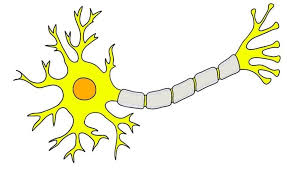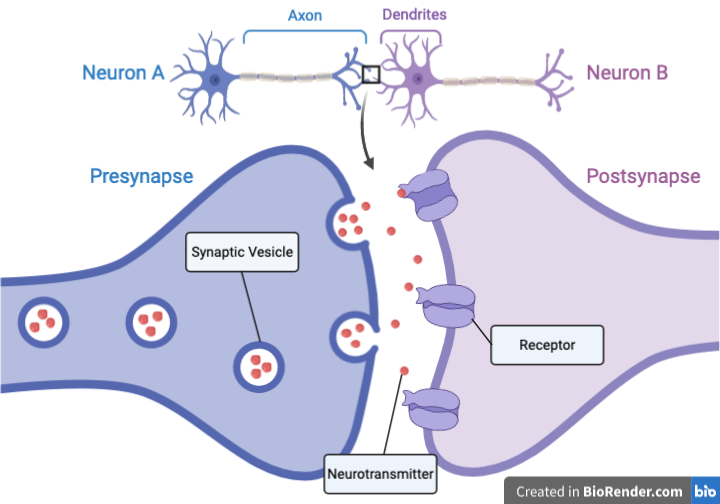AP Psych Exam Study Guide
1/888
Earn XP
Description and Tags
Comprehensive AP Psychology Flashcard Set that helped me get a 5
Name | Mastery | Learn | Test | Matching | Spaced |
|---|
No study sessions yet.
889 Terms
Empiricism
the view that knowledge originates in experience and that science should, therefore, rely on observation and experimentation
Structuralism
an early school of psychology that used introspection to explore the structural elements of the human mind
Functionalism
a school of psychology that focused on how our mental and behavioral processes function-how they enable us to adapt, survive and flourish
Experimental psychology
the study of behavior and thinking using the experimental method
Behaviorism
the view that psychology (1) should be an objective science that (2) studies behavior without reference to mental processes. Most research psychologists today agree with (1) but not with (2)
Humanistic psychology
historically significant perspective that emphasized the growth potential of healthy people and the individual's potential for personal growth
Cognitive neuroscience
the interdisciplinary study of the brain activity linked with cognition (including perception, thinking, memory, and language)
Psychology
the science of behavior and mental processes
Nature-nurture issue
the longstanding controversy over the relative contributions that genes and experience make to the development of psychological traits and behaviors. Today's science sees traits and behaviors arising from the interaction of nature and nurture
Natural selection
the principle that, among the range of inherited trait variations, those contributing to reproduction and survival with most likely be passed on to succeeding generations
Level of analysis
the differing complementary views, from biological to psychological to social-cultural, for analyzing any given phenomenon
Biopsychosocial approach
an integrated approach that incorporates biological, psychological, and social-cultural levels of analysis
Biological psychology
a branch of psychology that studies the links between biological (including neuroscience and behavior genetics) and psychological processes
Evolutionary psychology
the study of the roots of behavior and mental processes using the principles of natural selection
Psychodynamic psychology
a branch of psychology that studies how unconscious drives and conflicts influence behavior, and uses that information to treat people with psychological disorders
Behavioral psychology
the scientific study of observable behavior, and its explanation by principles of learning
Cognitive psychology
the scientific study of all the mental activities associated with thinking, knowing, remembering, and communicatin
Social-cultural psychology
the study of how situations and cultures affect our behavior and thinking
Psychometrics
the scientific study of the measurement of human abilities, attitudes, and traits
Basic research
pure science that aims to increase the scientific knowledge base
Developmental psychology
the scientific study of physical, cognitive, and social change throughout the life span
Educational psychology
the study of how psychological processes affect and can enhance teaching and learning
Personality psychology
the study of an individual's characteristic pattern of thinking, feeling and acting
Social psychology
the scientific study of how we think about, influence, and relate to one another
Applied research
scientific study that aims to solve practical problems
Industrial-organizational (I/O) psychology
the application of psychological concepts and methods to optimizing human behavior in workplaces
Human factors psychology
the study of how people and machines interact and the design of safe and easily used machines and environments
Counseling psychology
a branch of psychology that assists people with problems in living (often related to school, work, or marriage) and in achieving greater well-being
Clinical psychology
a branch of psychology that studies, assesses, and treats people with psychological disorders
Psychiatry
a branch of medicine dealing with psychological disorders; practiced by physicians who often provide medical treatments as well as psychological therapy
Mary Whiton Calkins
American psychologist who conducted research on memory, personality, and dreams; first woman president of the American Psychological Association
Introspection
a method of self-observation in which participants report their thoughts and feelings
Hindsight Bias
The tendency to believe, after learning an outcome, that you knew that all along
Critical Thinking
Thinking that does not blindly accept arguments and conclusions. Rather, it examines assumptions, discerns hidden values, evaluates evidence, and assesses conclusions.
Theory
An explanation using an integrated set of principles that organizes and predicts observations
Hypothesis
A testable prediction, often implied by a theory
Operational Definition
A statement of the procedures used to define research variables. Ex: human intelligence -- what an intelligence test measures.
Replication
Repeating the essence of a research study, usually with different participants in different situations, to see whether the basic finding extends to other participants and circumstances
Case Study
An observation technique in which ONE person or GROUP is studied in depth in the hope of revealing universal principles
Survey
A technique for ascertaining the self-reported attitudes or behaviors of people, usually by questioning a representative, random sample of them
Population
All the cases in a group, from which samples may be drawn for a study
Random Sample
A sample that fairly represents a population because each member has an equal chance of inclusion
Naturalistic Observation
Observing and recording behavior in naturally occurring situations without trying to manipulate and control the situation
Correlation
A measure of the extent to which two factors vary together, and thus of how well either factor predicts the other. The correlation coefficient is the mathematical expression of the relationship, ranging from -1 to +1
Correlation Coefficient
a statistical index of the relationship between two things (from -1 to +1)
Scatter plot
A graphed cluster of dots, each of which represents the values of two variables. The slope of the points suggests the direction of the relationship between the two variables. The amount of scatter suggests the strength of the correlation
Illusory Correlation
The perception of a relationship where none exists
Experiment
A research method in which an investigator manipulates one or more factors (independent variables) to observe the effects on some behavior or mental process (the dependent variable). By random assignment of participants, the experimenter aims to control other relevant variable
Random Assignment
Assigning participants to experimental and control conditions by chance ,thus minimizing preexisting differences between those assigned to the different groups
Double Blind Procedure
An experimental procedure in which both the research participants and the research staff are ignorant about whether the research participants have received the treatment or a placebo. Commonly used in drug-evaluation studies
Placebo Effect
any effect that seems to be a consequence of administering a placebo
Experimental Group
in an experiment, the group that is exposed to the treatment, that is, to one version of the independent variable.
Control Group
in an experiment, the group that is not exposed to the treatment; contrasts with the experimental group and serves as a comparison for evaluating the effect of the treatment.
Independent Variable
The experimental factor that is manipulated--the variable whose effect is being studied
Confounding Variable
a factor other than the independent variable that might produce an effect in an experiment.
Dependent Variables
The outcome factor -- the variable that may change in response to manipulations of the independent variable
Mode
The most frequently occurring score(s) in a distribution
Mean
The arithmetic average of a distribution, obtaining by adding the scores and then dividing by the number of scores
Median
The middle score in a distribution--half the scores are above it and half are below it
Standard Deviations
A computed measure of how much scores vary around the mean score
Normal Curve/distribution
a symmetrical, bell-shaped curve that describes the distribution of many types of data; most scores fall near the mean (68% fall within one standard deviation of it) and fewer near the extremes
Statistical Significance
A statistical statement of how likely it is that an obtained result occurred by chance
Culture
the enduring behaviors, ideas, attitudes, and traditions shared by a large group of people and transmitted from one generation to the next
Informed Consent
an ethical principle requiring that research participants be told enough to enable them to choose whether they wish to participate
Debriefing
the post-experimental explanation of a study, including its purpose and any deceptions, to its participants
Sample
items selected at random from a population and used to test hypotheses about the population
Range
the difference between the highest and lowest scores in a distribution
Inferential Statistics
numerical methods used to determine whether research data support a hypothesis or whether results were due to chance
Placebo
experimental results caused by expectations alone; any effect on behavior caused by the administration of an inert substance or condition, which the recipient assumes is an active agent.
Scientific Attitude
Curiosity, Skepticism, Humility
Overconfidence
Tendency to be more confident than correct—-to overestimate the accuracy of our beliefs & judgements
Biological Psychology
Scientific study of links between biology (genetic, neural, hormonal) & psychological processes

Neurons (nerve cells)
a nerve cell; basic building block of the nervous system
Dendrite Fibers
neuron’s bushy, branching extensions that receive messages & conduct impulses toward the cell body
Cell Body
central part of the neuron which contains the nucleus
Nucleus
contains the neuron’s genetic code
Axon
Neuron extension that passes messages through its branches to other neurons or to muscles or glands
Myelin Sheath
fatty tissue layer encasing axons of some neurons; enables greater transmission speed
Axon terminal
the end of an axon that sends out the signals to other cells via neurotransmitters
Action Potential
a neural impulse; brief electrical charge that travels down an axon
Refractory Period
a period of inactivity after a neuron has fired
Threshold
a level of stimulation required to trigger a neural response
All-Or-None Response
a neuron’s reaction of either firing (with full strength response) or not firing

Synapse
junction between the axon tip of the sending neuron & the dendrite or cell body of the receiving neuron
Neurotransmitters
chemical messengers that cross the synaptic gap to send messages between neuron; influence the body and its function
Acetylcholine (ACh)
enables muscle action, learning & memory; these neurons deteriorate with Alzheimers
Dopamine
influences movement, learning, attention, & emotion; oversupply linked to schizophrenia; undersupply linked to tremors & decreased mobility in Parkinson’s Disease
Serotonin
affects mood, hunger, sleep, & arousal; undersupply linked to depression; some antidepressants increase these levels
Norepinephrine
helps control alertness & arousal; undersupply linked to depressed mood
GABA (gamma-aminobutyric acid)
major inhibitory neurotransmitter; undersupply linked to seizures, tremors, & insomnia
Glutamate
major excitatory neurotransmitter; involved in memory; oversupply linked to overstimulated brain, producing migraines and seizures
Reuptake
neurotransmitters’ reabsorption by the sending neuron
Endorphins
natural, opiate-like neurotransmitters linked to pain control & pleasure
Agonist
stimulates responses by binding to receptors; in artificial substances, it is similar to neurotransmitters, and mimics its effect
Antagonist
blocks responses by binding to receptors; in artifical substances, it blocks release of certain neurotransmitters, and it similar enough to bind to receptor site but not to stimulate a response
Nervous System
the body’s speedy, electrochemical communication network
Central nervous system
the brain and spinal cord; body’s decision maker
Peripheral nervous system
sensory & motor neurons that connect central nervous system to rest of body; gathers info & transmits CNS decision to other body parts
Nerves
bundled axons that form neural cables; connects the CNS with muscles, glands, & sense organs
Sensory neurons
carry messages from body’s tissues & sensory receptors to brain & spinal cord